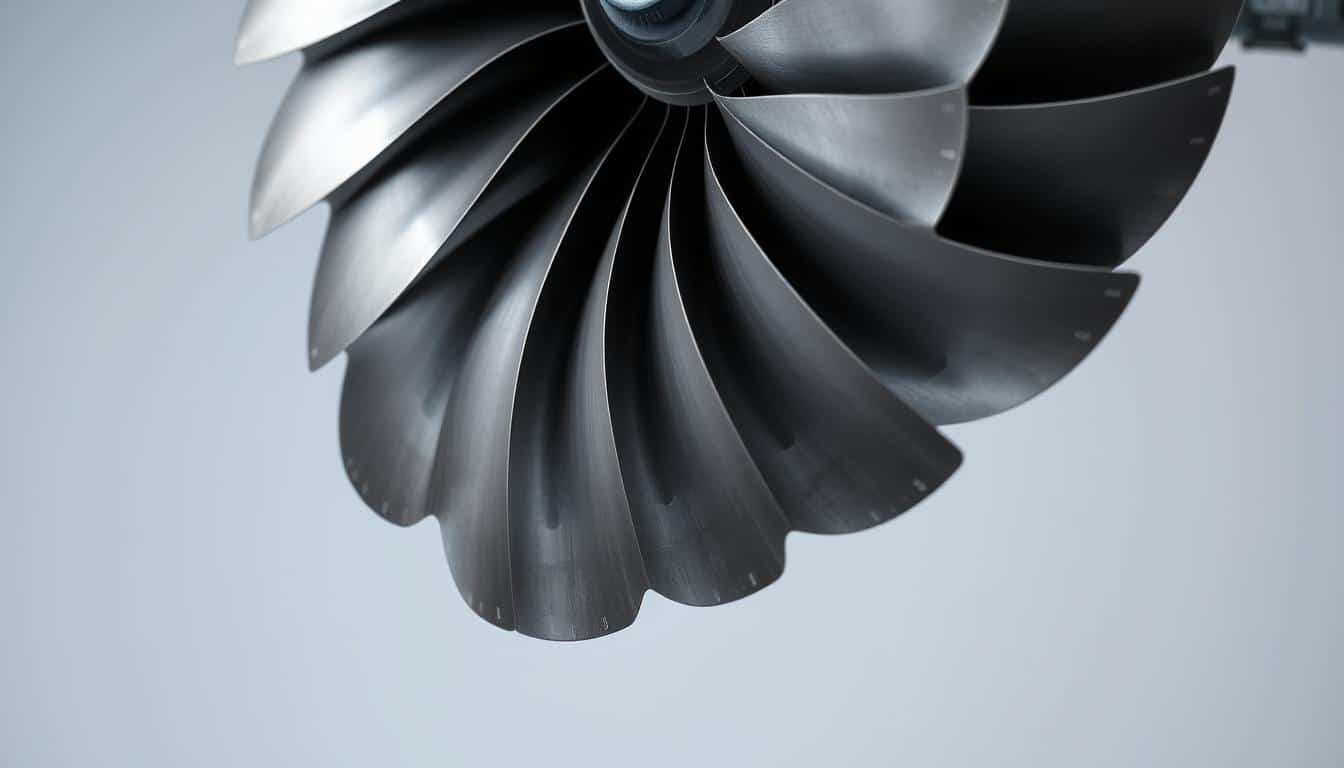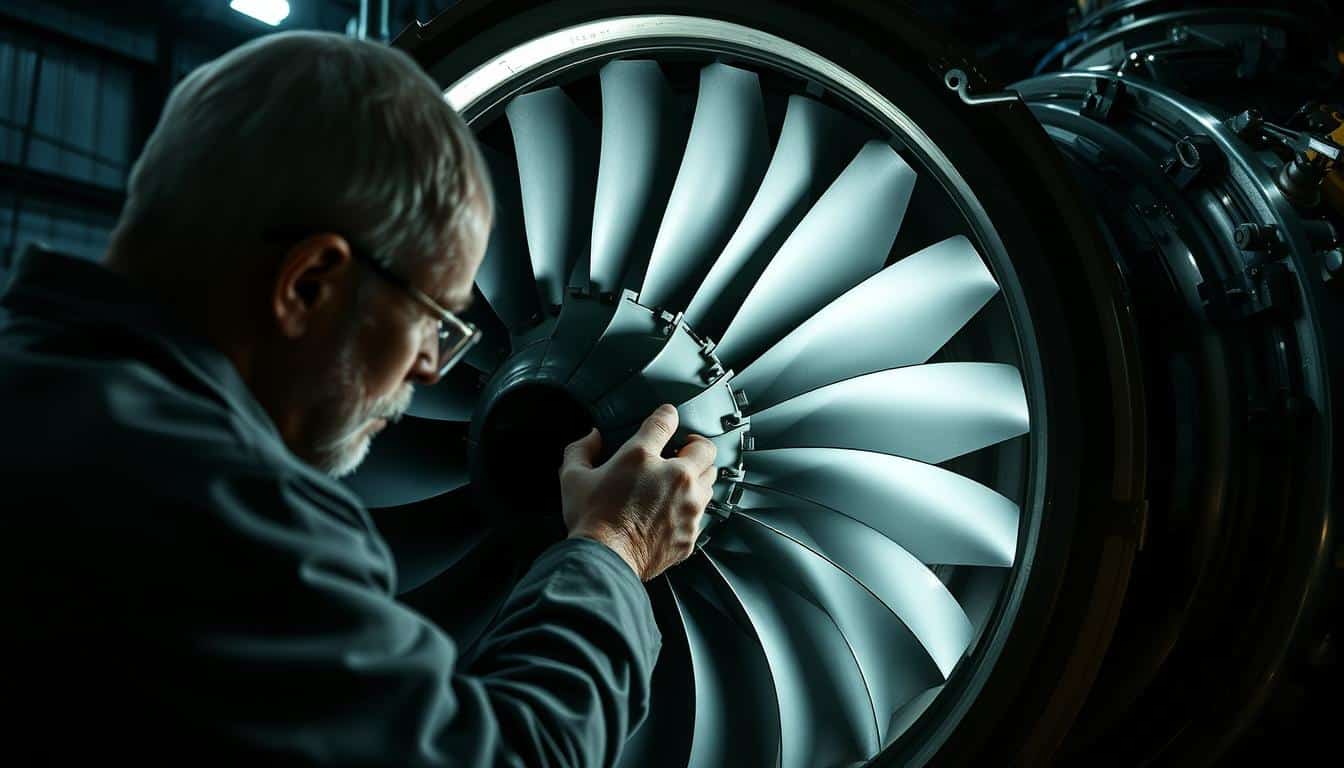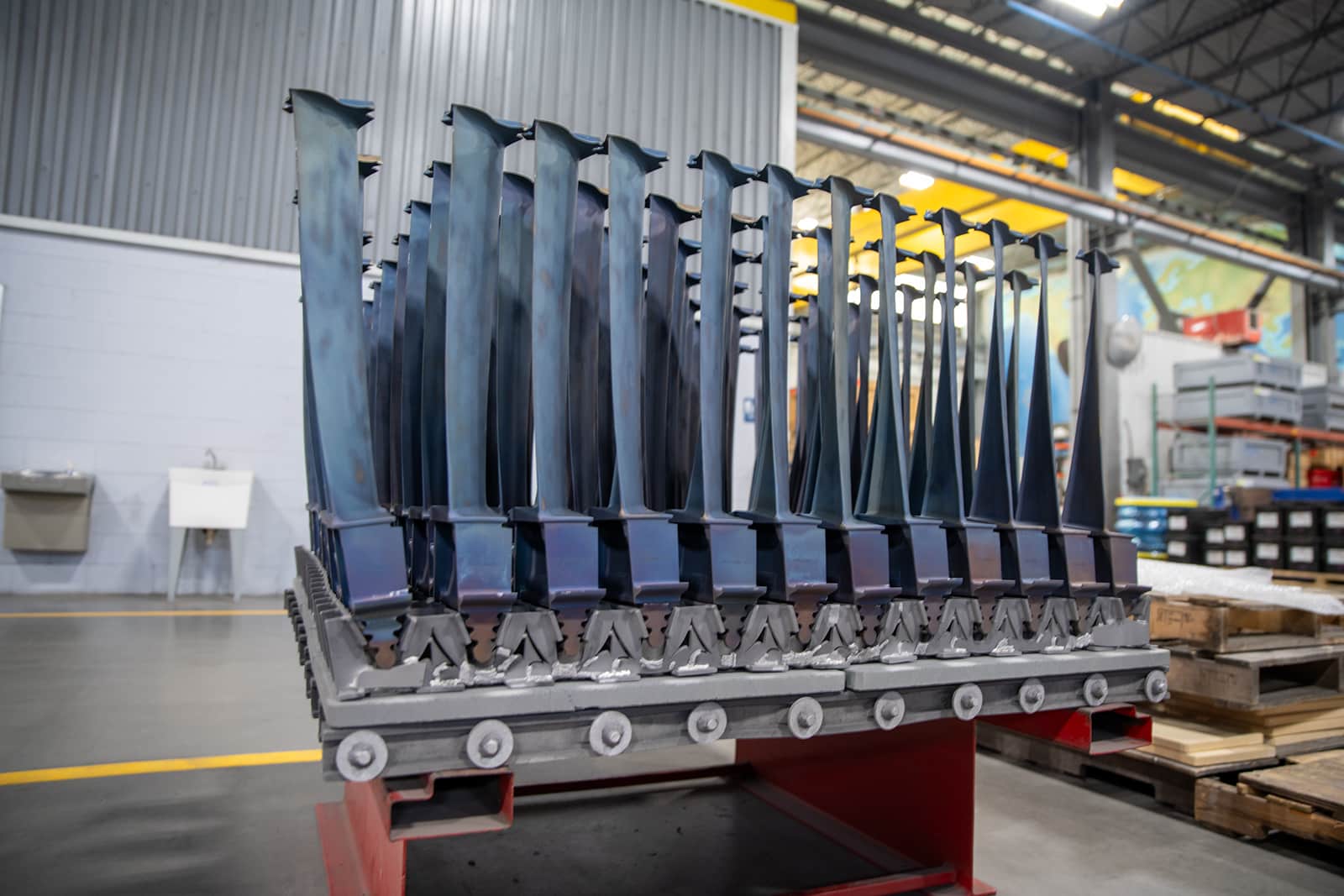
Your power generation equipment faces harsh conditions daily. High temperatures, intense pressure, and corrosive environments gradually wear down critical components. When turbine blades show signs of damage, it’s vital to recognize these warning signals for maintaining optimal turbine efficiency.
Blade deterioration affects your facility’s power output and operational efficiency. Spotting wear and damage patterns, erosion damage, and performance decline early prevents costly shutdowns. Understanding these indicators helps plan maintenance schedules that extend the life of the equipment and reduce downtime.
Allied Power Group, with decades of experience, serves Houston’s power sector. Our team specializes in diagnosing blade conditions and providing maintenance solutions. Professional assessments ensure catching problems before they lead to major failures, compromising your operation.
Key Takeaways
- Early detection of blade damage prevents catastrophic equipment failures and costly emergency repairs
- Declining power output and reduced efficiency often indicate blade deterioration requiring immediate attention
- Corrosion and erosion patterns on blades signal the need for professional inspection and possible replacement
- Proactive maintenance scheduling based on blade condition extends equipment lifespan and optimizes performance
- Professional diagnostic services identify subtle damage signs that untrained personnel might miss
- Timing maintenance correctly reduces operational costs and prevents unplanned facility shutdowns
Critical Warning Signs That Signal Blade Deterioration
Identifying early signs of blade deterioration is key to avoiding major turbine failures and expensive repairs. Gas turbines operate under harsh conditions, gradually wearing down blade surfaces. This compromises their structural integrity. Allied Power Group’s inspection expertise helps spot critical deterioration signs before major failures occur.
Professional assessment involves a detailed look at visible damage and performance changes. Advanced condition monitoring techniques provide detailed data on blade health and remaining service life. Understanding these indicators allows for informed maintenance decisions, protecting your investment.
Visual Indicators of Turbine Blade Damage
Surface pitting is a common form of blade degradation seen during routine inspections. These small craters form when high-velocity particles hit blade surfaces repeatedly. This accelerates material loss and creates stress points that can lead to crack initiation.
Leading edge erosion shows up as rounded or worn surfaces where sharp blade profiles once were. This damage reduces aerodynamic efficiency and increases clearance between moving parts. Visual inspection reveals the extent of these changes, affecting turbine performance.
Trailing edge cracking appears as hairline fractures from high-stress areas. These cracks compromise the blade’s mechanical properties and can cause catastrophic failure if untreated. Fluorescent penetrant testing detects surface-breaking cracks not visible to the naked eye.
Coating degradation is evident as discoloration, spalling, or complete loss of protective thermal barrier coatings. These coatings shield the underlying microstructure from extreme temperatures. Their deterioration exposes the base metal to thermal damage and oxidation.
Performance-Based Warning Signs
Decreased power output often signals blade deterioration affecting gas path efficiency. The turbine rotor may struggle to maintain design performance levels as blade profiles change. This reduction occurs gradually, making baseline comparisons essential for detection.
Increased fuel consumption indicates that the turbine requires more energy to produce the same power output. Blade damage disrupts optimal gas flow patterns and reduces thermodynamic efficiency. Quality control monitoring tracks these performance trends over time.
Elevated exhaust temperatures suggest combustion gases aren’t expanding properly through the turbine stages. Damaged blades create flow restrictions and reduce heat extraction efficiency. Temperature monitoring systems provide early warning of developing problems.
Unusual vibration patterns emerge when blade deformation affects the natural frequency characteristics of rotating assemblies. These vibrations can damage other turbine components and indicate serious structural issues. Condition monitoring systems detect vibration changes that warrant immediate investigation.
Professional inspection protocols combine visual examination with advanced testing methods to accurately assess blade condition. Dimensional measurements track material loss progression and clearance changes over time. This approach ensures reliable data for maintenance planning decisions.
Understanding Gas Turbine Reblading and Its Critical Role
Grasping the reblading process is key to making informed decisions about your turbine’s future. This thorough refurbishment turns old equipment into high-performance assets. Allied Power Group excels in reblading services, boosting turbine performance and extending its life through advanced engineering.
What Professional Reblading Involves
Professional reblading starts with disassembling your turbine’s hot section parts. Skilled technicians then inspect each blade’s condition and pinpoint areas needing repair. They use advanced techniques like rotor manufacturing, overlay welding, and laser cladding to rebuild the structure.
Surface preparation is vital for bonding new materials with existing parts. Protective coatings are applied to prevent corrosion, extending the service life. High-speed balancing, adhering to API standards, ensures smooth operation and reduces vibration.
Impact on Combined Cycle Power Generation
Combined cycle power stations heavily depend on gas turbine performance for efficiency. Reblading improves gas flow, maintaining design pressure ratios for effective steam generation. This restoration is critical for the plant’s overall efficiency.
Optimal turbine blade performance boosts the entire combined cycle system. It leads to better fuel efficiency and lower emissions. These enhancements contribute to environmental compliance and cost savings.
Hot Section Components and Service Life Extension
Hot section components endure harsh conditions, degrading blade materials over time. Reblading replaces these worn blades with superior materials, extending the turbine’s life by 10-15 years.
Strategic reblading reduces long-term capital costs. It avoids premature equipment replacement, ensuring reliable operations. The engineering community views reblading as a cost-effective asset management strategy.
Advanced Materials and Protective Coatings
Modern reblading employs new materials that outperform original specifications. These materials resist high-temperature degradation and corrosive environments better. Thermal spray applications add protection against oxidation, sulfidation, and erosion.
Protective coatings represent the latest technology in turbine blade performance. They undergo extensive testing to ensure compatibility with your specific conditions. This results in enhanced durability, longer maintenance intervals, and fewer unplanned outages.
The Financial Impact of Delayed Maintenance Decisions
Delaying turbine reblading decisions leads to significant financial consequences. The power industry has shown how delaying maintenance turns small costs into large expenses. Studies consistently show that proactive maintenance is more cost-effective than reactive maintenance.
Allied Power Group assists customers in understanding these financial impacts. We provide detailed cost analysis and strategic planning. Our expertise helps operators make informed decisions, safeguarding their equipment and maintaining profitability.
Escalating Repair Costs and Component Damage
Emergency repairs are 60-70% more expensive than planned maintenance. Blade deterioration can damage stators, rotors, and combustion systems. This leads to higher costs as multiple systems need repair or replacement.
Secondary damage often requires complete overhauls, not just repairs. This means operators face not only blade replacement costs but also rebuilding other components. Timely intervention could have kept these components functional.
Extended Downtime and Lost Revenue
Unplanned outages can cost power generation facilities hundreds of thousands of dollars daily. Peak demand periods increase these losses further. Downtime also disrupts contractual obligations, potentially leading to penalty payments.
Emergency situations require urgent parts procurement and specialized labor, both at a higher cost. The combination of lost revenue and increased repair costs significantly reduces plant profitability and return on investment.
Risk Assessment for Continued Operation
Risk of failure analysis must consider catastrophic scenarios that could require turbine replacement. Operating beyond recommended maintenance intervals increases the risk of major component failure. Best practice maintenance strategies focus on prevention to minimize these risks.
O&M expenses decrease when equipment operates near its original state through proper maintenance. Following OEM recommendations and proven maintenance strategies prevents the exponential cost growth associated with deferred maintenance decisions.
| Maintenance Approach | Initial Cost | Secondary Damage Risk | Downtime Duration | Total Financial Impact |
|---|---|---|---|---|
| Planned Reblading | $150,000-$300,000 | Minimal | 7-14 days | Low to Moderate |
| Delayed Maintenance | $250,000-$500,000 | High | 21-45 days | High |
| Emergency Repair | $400,000-$800,000 | Very High | 30-60 days | Very High |
| Catastrophic Failure | $1,000,000+ | Complete Replacement | 90+ days | Extreme |
Professional Inspection and Assessment Techniques
Comprehensive turbine blade evaluation demands specialized testing methods and expert analysis capabilities. Professional assessment goes beyond surface-level visual checks to identify critical defects. These could compromise your turbine’s performance. Allied Power Group uses advanced inspection techniques and follows GE-specific protocols for thorough turbine blade assessment.
Modern inspection programs integrate multiple testing approaches to create a complete picture of blade condition. These sophisticated methods detect problems early, allowing you to address issues before they escalate into costly failures. Professional evaluation provides the data you need to make informed maintenance decisions.
Advanced Non-Destructive Testing Methods
Non-destructive testing forms the backbone of professional blade assessment programs. Eddy current testing identifies surface and near-surface defects in conductive materials without damaging components. This method excels at detecting cracks, corrosion, and material thinning that visual inspection might miss.
Ultrasonic inspection penetrates deep into blade materials to locate internal flaws and measure wall thickness. The technology uses high-frequency sound waves to map structural integrity throughout the entire component. Radiographic examination provides detailed images of internal blade structure, revealing voids, inclusions, and other hidden defects.
Magnetic particle inspection detects surface and slightly subsurface discontinuities in ferromagnetic materials. This technique proves valuable for examining dovetail connections and blade root areas where stress concentrations occur. Each method contributes unique insights that combine to create a complete condition assessment.
Evaluating Structural Integrity and Mechanical Properties
Structural integrity evaluation requires detailed analysis of mechanical properties and material behavior under operating conditions. Fatigue resistance testing determines how blades respond to repeated loading cycles that occur during normal operation. This data helps predict remaining service life and optimal replacement timing.
Creep behavior analysis examines how materials deform under sustained high-temperature stress conditions. Thermal cycling effects assessment evaluates damage accumulation from repeated heating and cooling cycles. These mechanical engineering evaluations provide critical insights into blade performance capabilities.
Finite element analysis combines inspection data with computer modeling to predict stress distributions and failure modes. Data analysis techniques process operational history alongside inspection results to develop customized maintenance strategies. This approach optimizes maintenance intervals based on actual operating conditions, not generic industry standards.
Coating adhesion testing ensures protective layers maintain proper bonding to substrate materials. Poor adhesion leads to coating failure and accelerated blade degradation in harsh conditions. Professional assessment identifies coating problems before they compromise blade protection.
GE Gas Turbine Specific Inspection Protocols
GE gas turbine models require specialized inspection protocols that account for unique design characteristics and material specifications. API 687 inspection standards provide guidelines including rotor cleaning, visual inspection, and mechanical run-out measurements. These protocols ensure consistent evaluation across different turbine configurations.
Electrical run-out testing verifies proper blade alignment and balance within acceptable tolerances. Detailed reporting documents all findings and provides specific repair proposals based on inspection results. GE-specific procedures address manufacturer requirements for warranty compliance and performance optimization.
Professional inspection teams understand the unique challenges of corrosive environments and extreme operating temperatures. They implement solutions to enhance efficiency and reliability while developing new maintenance approaches tailored to your specific operational requirements. This expertise ensures your GE turbine receives the specialized attention it deserves.
Comprehensive assessment evaluates all critical interfaces and attachment points to maintain structural integrity under demanding operating conditions. Professional protocols identify opportunities for performance improvements and service life extension through targeted maintenance interventions.
Strategic Timing for Maximum Cost-Effectiveness
Effective project management turns turbine reblading into a strategic advantage. Success hinges on coordinating various factors to enhance immediate operations and long-term asset value. By making smart timing decisions, you can retrofit and refurbish components efficiently, reducing downtime costs.
Modern gas turbine operations demand meticulous planning, going beyond simple scheduling. You must consider equipment availability, workforce coordination, and other maintenance activities. This holistic approach maximizes your maintenance investment’s return.
Planned Outage Coordination and Project Management
Your planned outage strategy is key to reblading success. Professional project management ensures maintenance activities align with scheduled windows. This alignment allows for simultaneous extension of multiple components’ lives.
Both on-site and workshop overhauls and repairs are feasible. Your team coordinates these efforts for minimal downtime and superior results. The turbine’s design life heavily relies on this strategic planning.
Advanced welding techniques for rotor and stator components are part of effective planning. These enhancements boost longevity and performance beyond original expectations. Your team can tackle multiple systems during single outages.
Seasonal Considerations for Power Station Operations
Peak demand periods necessitate maximum turbine availability. Schedule major maintenance during spring and fall shoulder seasons when demand is lower. This strategy safeguards revenue during critical periods.
Ambient conditions impact maintenance quality and turbine performance. Cooler temperatures in shoulder seasons are ideal for precision work. These conditions enhance efficiency and output.
Water wash schedules and routine maintenance activities complement reblading operations. This coordination maximizes maintenance window effectiveness. Achieving multiple objectives while minimizing downtime is possible.
Balancing Immediate Needs with Lifetime Extension Goals
Your maintenance strategy must address current blade condition and future needs. Analyzing projected degradation rates guides optimal intervention timing. This strategy improves durability and extends operational life.
Strategic retrofit opportunities arise during planned maintenance windows. Implementing upgrades and protective coatings enhances performance and reliability. These investments significantly boost long-term reliability.
Allied Power Group offers expert project management and timing advice for cost-effectiveness. Their approach minimizes operational disruption while optimizing maintenance outcomes. Your turbine receives thorough attention, ensuring reliable operation for years.
Conclusion
Identifying the warning signs for gas turbine reblading is the first step to maintaining peak power generation efficiency. Recognizing blade deterioration early can significantly impact maintenance costs and extend service life. This proactive approach is key to cost-effective maintenance strategies.
When performance indicators decline, professional services become critical. The timing of reblading decisions influences both operational experience and long-term profitability. Strategic maintenance planning helps avoid costly emergency repairs by addressing minor issues before they escalate.
Quality control and adherence to best practices are vital for maximizing the value of reblading projects. Investing in professional maintenance strategies safeguards critical power generation assets. It also optimizes performance over extended operational cycles.
Allied Power Group is ready to offer expert gas turbine reblading services and maintenance solutions across the United States. Their services include complete overhauls, emergency response, spare parts manufacturing, and field services. They utilize experienced technicians and state-of-the-art facilities.
Ensuring your turbine’s future requires making informed maintenance decisions at the right time. Collaborating with experienced professionals guarantees reliable power generation. It also maximizes return on investment through proven maintenance excellence.
FAQ
What are the most obvious visual signs that my gas turbine blades need replacement?
Look for surface pitting, leading edge erosion, and trailing edge cracking on your turbine blades. These signs indicate material loss and compromise aerodynamic efficiency. Also, check for deformation in dovetail connections and any changes in blade clearance that could affect turbine performance.
How do performance changes indicate that my turbine requires reblading?
Decreased power output, increased fuel consumption, elevated exhaust temperatures, and unusual vibration patterns are warning signs. These symptoms suggest blade deterioration has significantly impacted your turbine’s efficiency and reliability, requiring immediate professional assessment.
What does professional gas turbine reblading actually involve?
Professional reblading is a detailed restoration process. It includes removing, inspecting, and replacing damaged blades with advanced materials. The process involves disassembling hot section components, manufacturing new blades, and applying protective coatings to enhance resistance to corrosive environments.
How much service life extension can I expect from professional reblading?
Professional reblading can extend your turbine’s operational life by 10-15 years. It significantly improves fuel efficiency and reduces emissions. Modern reblading solutions often exceed original specifications due to advanced materials and engineering improvements.
What are the financial consequences of delaying reblading decisions?
Delaying reblading can lead to significant financial consequences. Minor blade damage can progress, affecting adjacent components and increasing repair costs. Emergency failures can cost power generation facilities hundreds of thousands of dollars daily in lost revenue.
How much can I save by timing reblading properly versus emergency repairs?
Planned reblading during scheduled maintenance windows costs 60-70% less than emergency repairs. This approach avoids secondary damage, maintains fuel efficiency, and prevents exponential cost increases associated with deferred maintenance.
What advanced inspection techniques are used to assess blade condition?
Professional inspection employs sophisticated non-destructive testing methods. These include eddy current testing, ultrasonic inspection, radiographic examination, magnetic particle inspection, and fluorescent penetrant testing. These techniques evaluate structural integrity and identify subsurface defects invisible to visual examination without compromising component functionality.
Are there specific inspection protocols for GE gas turbines?
Yes, GE gas turbine specific inspection protocols exist. They incorporate manufacturer-developed procedures that account for unique design characteristics, material specifications, and operational parameters. These protocols use finite element analysis and data analysis techniques to predict remaining service life based on actual operating conditions.
When is the best time to schedule reblading to minimize costs and downtime?
Strategic timing requires coordinating planned outages with seasonal demand patterns and long-term maintenance goals. Power stations typically schedule major maintenance during spring and fall shoulder seasons when electricity demand is lowest, avoiding peak demand periods.
How does reblading impact combined cycle power generation efficiency?
In combined cycle applications, reblading directly impacts overall plant efficiency. It restores optimal gas flow characteristics and maintains design pressure ratios essential for steam generation. This restoration significantly improves the efficiency and output of the entire power generation system, not just the gas turbine itself.
What role do protective coatings play in extending blade life?
Advanced protective coatings provide enhanced protection against oxidation, sulfidation, and erosion in harsh conditions. Thermal spray applications and specialized surface preparation techniques improve coating adhesion and durability. This helps blades withstand corrosive environments and high-temperature degradation throughout their operational life.
How do ambient operating conditions affect reblading timing decisions?
Ambient operating conditions significantly influence blade wear rates and maintenance needs. Facilities operating in corrosive environments or extreme temperatures may require more frequent assessments and earlier reblading interventions. Condition monitoring helps operators adjust maintenance strategies based on their specific operational environment.
What maintenance activities can be performed simultaneously with reblading?
During planned reblading outages, you can perform complementary maintenance activities. These include rotor inspection, stator refurbishment, water wash system maintenance, and retrofit installations. This approach maximizes maintenance efficiency and ensures all turbine components receive appropriate attention during the same downtime period.
How do modern reblading materials compare to original equipment?
Modern reblading solutions often use improved materials that offer superior resistance to high-temperature degradation compared to original specifications. The engineering community continues developing new materials with enhanced mechanical properties, better microstructure stability, and improved performance under harsh operating conditions.
What project management considerations are critical for successful reblading?
Effective project management ensures reblading activities align with scheduled outages, equipment availability, and operational requirements. This includes coordinating with OEM support, managing quality control measures, and implementing best practices. These efforts significantly improve project economics while maintaining the highest standards of workmanship and safety.


